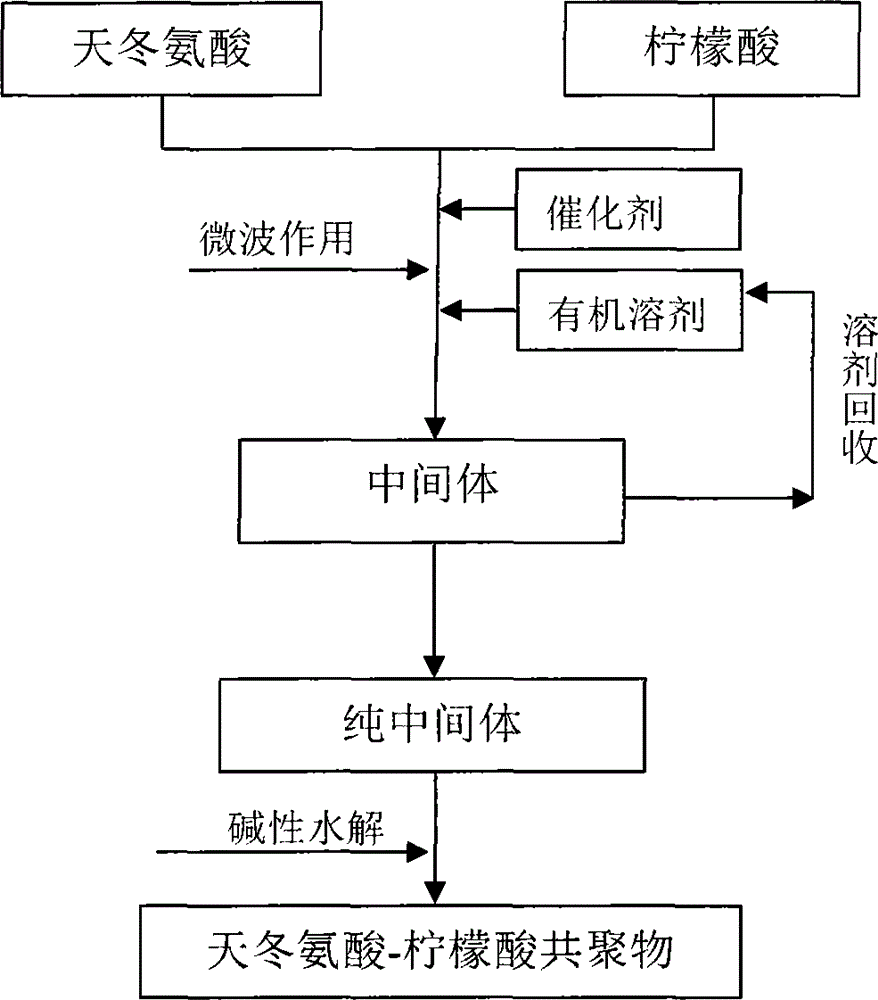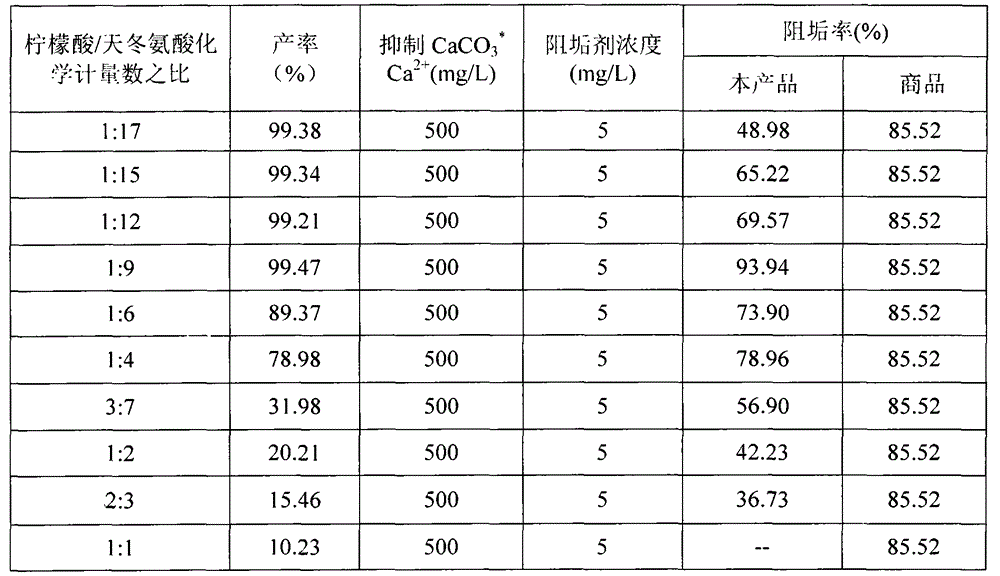Aspartic acid-citric acid copolymer and preparation method thereof
A technology of aspartic acid and citric acid, used in chemical instruments and methods, water/sludge/sewage treatment, descaling and water softening, etc., can solve the problems of poor scale inhibition performance and unstable performance, and achieve product The effect of stable performance, fast response speed and simple production process
- Summary
- Abstract
- Description
- Claims
- Application Information
AI Technical Summary
Problems solved by technology
Method used
Image
Examples
specific Embodiment approach 1
[0008] Specific embodiment one: the structural formula of the aspartic acid-citric acid copolymer of the present embodiment is: The range of y / (y+x) is 0.01-1.00, and the range of x+y is 4-150. The optimum range of y / (y+x) in this embodiment is 0.06-0.50, and the optimum range of x+y is 6-75.
specific Embodiment approach 2
[0009] Specific embodiment 2: In this embodiment, the aspartic acid-citric acid copolymer is prepared according to the following steps: citric acid and aspartic acid are used as raw materials, and the stoichiometric ratio is 0.01 to 1.00; a catalyst is added to the reactant and solvent; using microwave technology, under the conditions of microwave frequency 2450±50MHz and microwave power 400-10000W, the intermediate can be obtained by radiation reaction for 1-30min. At this time, the solvent is recovered in gaseous state and the intermediate is hydrolyzed. The aspartic acid-citric acid copolymer is obtained, wherein the ratio of the stoichiometric number of the catalyst to the reactant is 0.01-1.00, and the ratio of the stoichiometric number of the solvent to the reactant is 0.10-5.00.
[0010] In the preparation process, the reaction time will be shortened with the increase of power. Too short reaction time is not conducive to uniform reaction, so the reaction time is not less...
specific Embodiment approach 3
[0011] Specific implementation mode three: take 0.2mol of reaction raw materials in total, wherein aspartic acid 23.958g, citric acid 4.2028g, solvent is 15mL, the ratio of the stoichiometric number of catalyst / raw material is 0.1, and the reaction phenomena under different reaction conditions are included in in FIG. 1.
[0012] Table 1 Experimental phenomena under different reaction systems
[0013]
[0014] As can be seen from Table 1: aspartic acid and citric acid do not react under solvent-free and catalyst conditions; the two are in organic solvents without catalyst, the reaction is incomplete, and the productive rate is low; , and in an organic solvent, a satisfactory yield and a product with good performance can be obtained.
[0015] Specific embodiment four: get reaction raw material by the ratio of the stoichiometric number of citric acid in table 2 and aspartic acid, raw material adds up to 0.2mol; Add three-necked flat-bottomed flask, with NaH 2 PO 4 2H 2 O i...
PUM
 Login to View More
Login to View More Abstract
Description
Claims
Application Information
 Login to View More
Login to View More - R&D
- Intellectual Property
- Life Sciences
- Materials
- Tech Scout
- Unparalleled Data Quality
- Higher Quality Content
- 60% Fewer Hallucinations
Browse by: Latest US Patents, China's latest patents, Technical Efficacy Thesaurus, Application Domain, Technology Topic, Popular Technical Reports.
© 2025 PatSnap. All rights reserved.Legal|Privacy policy|Modern Slavery Act Transparency Statement|Sitemap|About US| Contact US: help@patsnap.com



